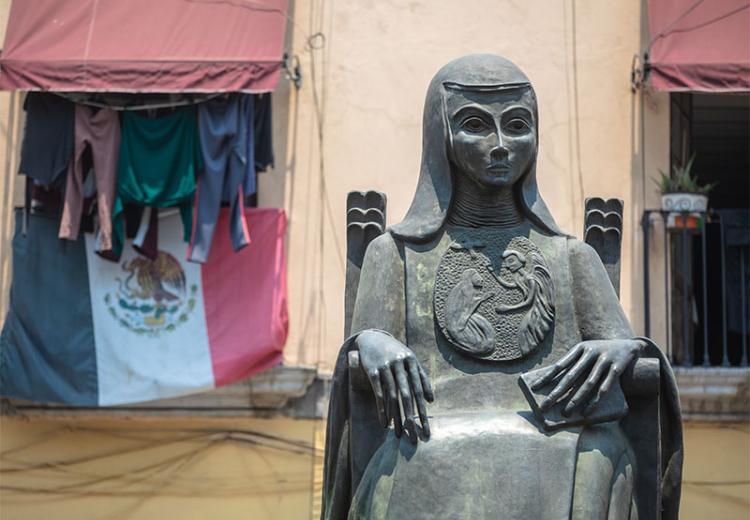Sor Juana, the Poet: The Sonnets

Monument devoted to Sor Juana Inés de la Cruz in front of San Jerónimo convent, Mexico City.
Yo no estimo tesoros ni riquezas;
y así, siempre me causa más contento
poner riquezas en mi pensamiento
que no mi pensamiento en las riquezas.-Sor Juana Inés de la Cruz from the Cervantes Virtual Library
Sor Juana Inés de la Cruz is one of the foremost poets of el Siglo de Oro Español (the Spanish Golden Age). As a woman--indeed, a nun--writing in seventeenth-century New Spain, Sor Juana faced great persecution, especially toward the end of her life. Her writing established her as both a masterful writer and early feminist. In this lesson students will analyze two of Sor Juana’s sonnets: “A su retrato” and “En perseguirme, Mundo, ¿qué interesas?” in their original language of publication. The major characteristics of Spanish Golden Age poetry will be identified by analyzing the language, the structure, and the poetic devices used. Particular attention will be paid to the style el gongorismo (named after the great Spanish Golden Age poet Luis de Góngora y Argote), characterized by an “extreme Baroque,” including the Latinizing of language through an altered syntax, Latin terms, classical references, copious use of poetic devices, and the use of difficult vocabulary.
This lesson is intended for students with advanced proficiency in Spanish.
Guiding Questions
Why is Sor Juana considered one of the most important poets of the Baroque movement and the first great poet of Latin America?
What characteristics of the Baroque and of "el gongorismo" can be identified in the sonnets of Sor Juana Inés de la Cruz?
Learning Objectives
Understand how the historical and cultural contexts influence literary creation.
Identify and effectively analyze sonnets of the Spanish Golden Age in Spanish.
Listen and comprehend; read and analytically write about poetry in Spanish.
